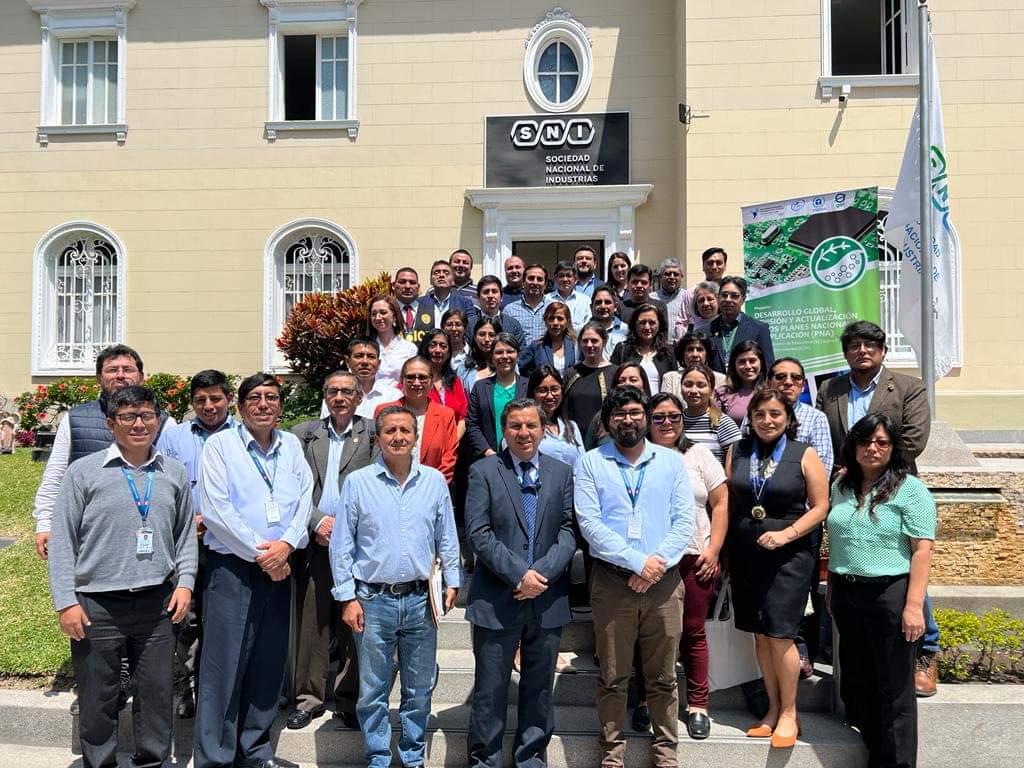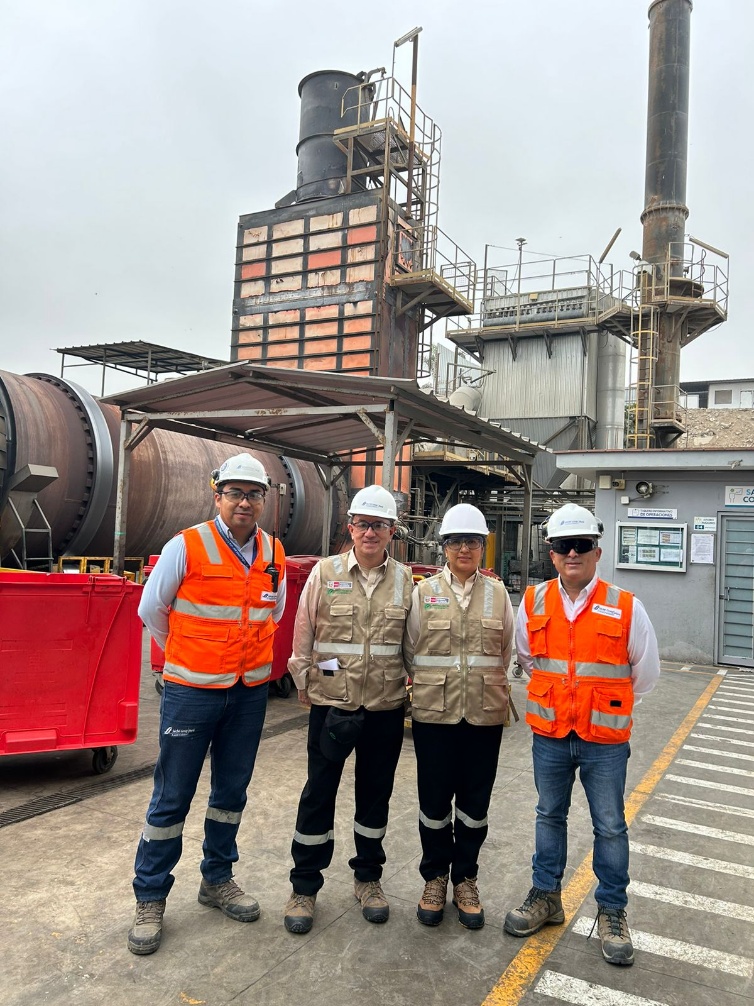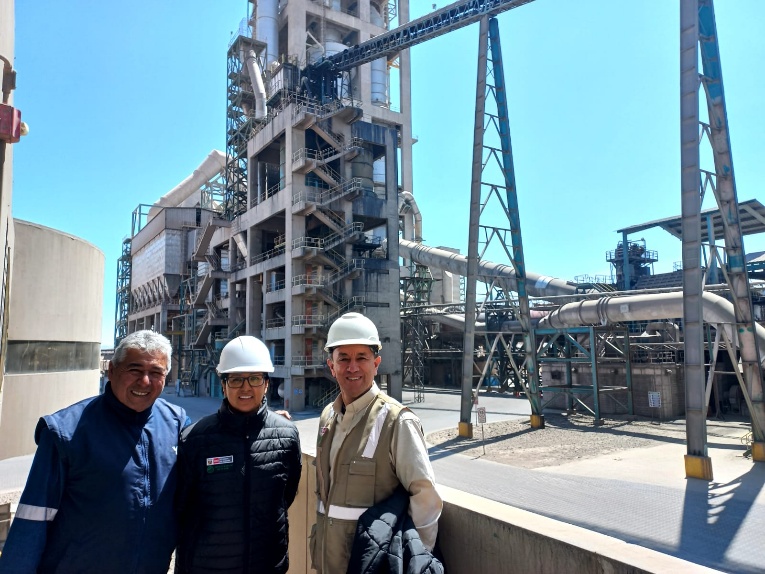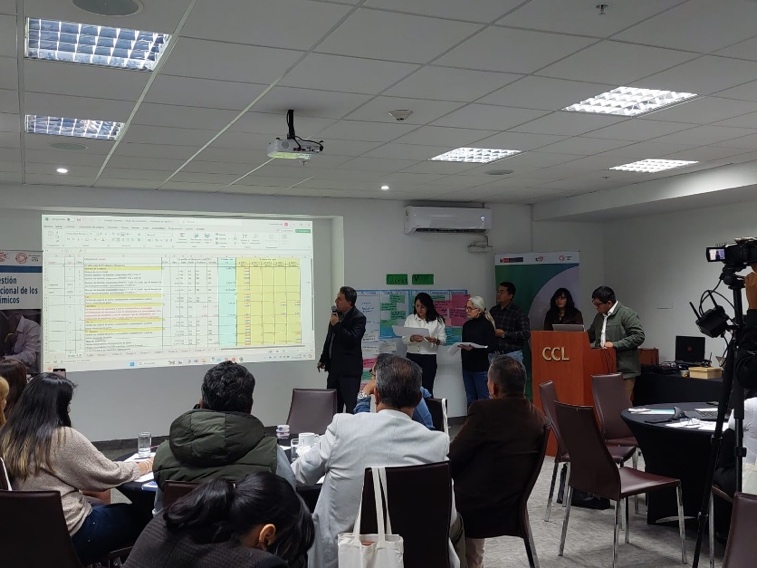This blog post was developed summarising the intervention of Peru on the Global Green Growth Knowledge Partnership (GGKP) roundtable Inside the POPs Inventory: Lessons, Challenges and Successes from the Global NIP Update held on 14 April 2025.
Peru’s journey to update its National Implementation Plan (NIP) under the Stockholm Convention on Persistent Organic Pollutants (POPs) is marked by collaboration, technical innovation, and persistent regulatory challenges. This blog post includes Peru’s experience and insights gained during the process of developing its preliminary POPs inventory report, which is currently under review.

Building the inventory: Collaboration and data sources
The development of Peru’s POPs inventory has been a cross-sectoral effort. Key government institutions, such as the Ministry of Production, played a strategic role in distributing surveys to estimate dioxin and furan emissions. Where surveys proved insufficient, the project team relied on authoritative sources such as statistical yearbooks and bulletins from the Ministry of Energy and Mines and the National Institute of Statistics and Informatics (INEI), updated through 2023. This approach allowed the team to achieve near-complete data coverage.

For the polychlorinated biphenyl (PCB) inventory, data is being updated in coordination with a dedicated PCB project also run by the Ministry of Environment. This parallel effort is expected to significantly enhance the accuracy of the national PCB inventory. In terms of POPs pesticides, responsibility lies with both the Ministry of Agriculture and the Ministry of Health. All POP pesticides are currently banned, with methoxychlor the only exception still pending elimination regulation. Authorities are also investigating whether perfluorooctanesulfonic acid (PFOS) may be entering the country under alternate trade names such as sulfluramid. The country has proactively banned chlorpyrifos, even though it is only a candidate POP under the Stockholm Convention. This decision highlights the country’s commitment to addressing hazardous chemicals in advance of global mandates.
For new industrial POPs such as polybrominated diphenyl ethers (PBDEs) and per- and polyfluoroalkyl substances (PFAS), Peru has relied primarily on Customs import data, using relevant tariff codes to estimate their presence in widely-used consumer products. Yet, there is no comprehensive regulation covering the management of new POPs, which leads to reluctance from the private sector to disclose data and contributes to information gaps in inventories.
Legislative context and its impact on inventory
Peru’s legal framework for chemicals management is evolving. A Law on the Comprehensive Management of Chemicals has been adopted in 2023, and its regulatory text is awaiting approval. However, the law excludes from its scope chemical substances contained in articles or products—including PCBs and many new industrial POPs—as well as unintentional POPs (UPOPs) like dioxins and furans.
“The absence of legal mechanisms for registering or managing POPs in products seriously complicates our ability to build a comprehensive inventory.”
Without a multisectoral framework aligned with the Stockholm Convention, Peru continues to face barriers to full implementation. Therefore, specific legislation is needed to regulate the identification, registration, management and elimination of POPs.

For PCBs, while there are regulatory provisions for managing PCB-containing equipment in the electric and mining sectors, their scope and implementation vary. The electricity sector has made significant progress through Environmental Management Plans for PCBs, which allow holders of contaminated assets to declare stockpiles by 2025 and dispose of them by 2028. In contrast, the mining sector’s regulations are less stringent and not fully aligned with Stockholm Convention timelines.
Nonetheless, promising developments are underway. A new regulation aimed at managing PCBs across all economic sectors (excluding mining and electricity) is nearing final approval. This regulation is expected to address informal maintenance practices and prevent cross-contamination that can contribute to rising PCB levels. Financial mechanisms such as credit lines are also needed to help industries replace PCB-containing equipment, as most sectors except electricity do not have spare equipment for immediate replacement, and this hinders PCB phase-out. Such support could motivate private stakeholders to declare contaminated stocks and align with elimination targets.
Progress and obstacles in managing dioxins and furans
The Ministry of Industry has taken the initiative to include emissions-related information in annual declarations—such as technology types and pollution control systems used—which will help systematise emission data for UPOPs. However, the lack of a centralised platform to collect and manage emissions data remains a challenge. This makes it difficult to carry out emission calculations using the UNEP Toolkit.
Synergies with other projects and good practices
Peru has also built productive synergies with other initiatives. Two flagship projects were mentioned:
- The Green Chemistry Project, which supports industry-level pilots to substitute POP-containing inputs practices to phase out POP-containing substances and replace them with safer options.
- The GEF-funded project on the environmentally sound management (ESM) of PCBs, mercury and other toxic chemicals, which aims to eliminate 600 tonnes of PCB and 100 tonnes of highly hazardous pesticides, including POPs.
These projects enhance the POPs inventory process by generating data, building capacity and modeling best practices for chemical management.
The importance of awareness and public education
Peru’s experience underscores the need for expanded public outreach to support POPs management.
“We need to implement mass communication strategies and environmental education programs that reach the general public—especially on the risks of PCBs, unintentional POPs, and the new industrial POPs.”
Raising public awareness is expected to create social pressure for cross-cutting regulations and support the progressive implementation of the Convention, starting with a robust national POPs inventory.

Peru’s case illustrates the dynamic interplay between institutional coordination, legal reform, stakeholder engagement and data generation. Although challenges remain—particularly around new POPs and regulatory coverage—significant strides have been made. Through multisectoral collaboration, strategic regulation and active participation in global initiatives, Peru is advancing its capacity to manage hazardous chemicals effectively.
The lessons shared during the roundtable reinforced a key message: sound data is the cornerstone of effective POPs management. When inventory quality is compromised, policy planning becomes guesswork. But as demonstrated by Peru, proactive efforts grounded in evidence and cooperation pave the way toward safer chemical governance.
This blog post was developed drawing on insights from the Global Green Growth Knowledge Partnership (GGKP) roundtable Inside the POPs Inventory: Lessons, Challenges and Successes from the Global NIP Update held on 14 April 2025. As part of the Global NIP Update project (GEF ID 10785), funded by the Global Environment Facility (GEF) and led by UNEP, this roundtable brought together nine countries currently engaged in reviewing and updating their National Implementation Plans (NIPs) under the Stockholm Convention to foster peer learning on the development of POPs inventories.
To learn more about the Global NIP Update project, visit Global NIP Update | Green Policy Platform
For a deeper dive into the GGKP roundtable on POPs inventory, you can access the full recordings and materials here: Inside the POPs Inventory: Lessons, Challenges and Successes from the Global NIP Update
Authors:
 |
Mr. Fernando Horna, Project Coordinator (Ministry of Environment of Peru)
|
 |
Ms. Marcela Vidalon, Technical Analyst (Ministry of Environment of Peru) |
 |
Ms. Soomin Bae, Knowledge Management Support Consultant (GGKP, GGGI)
|



